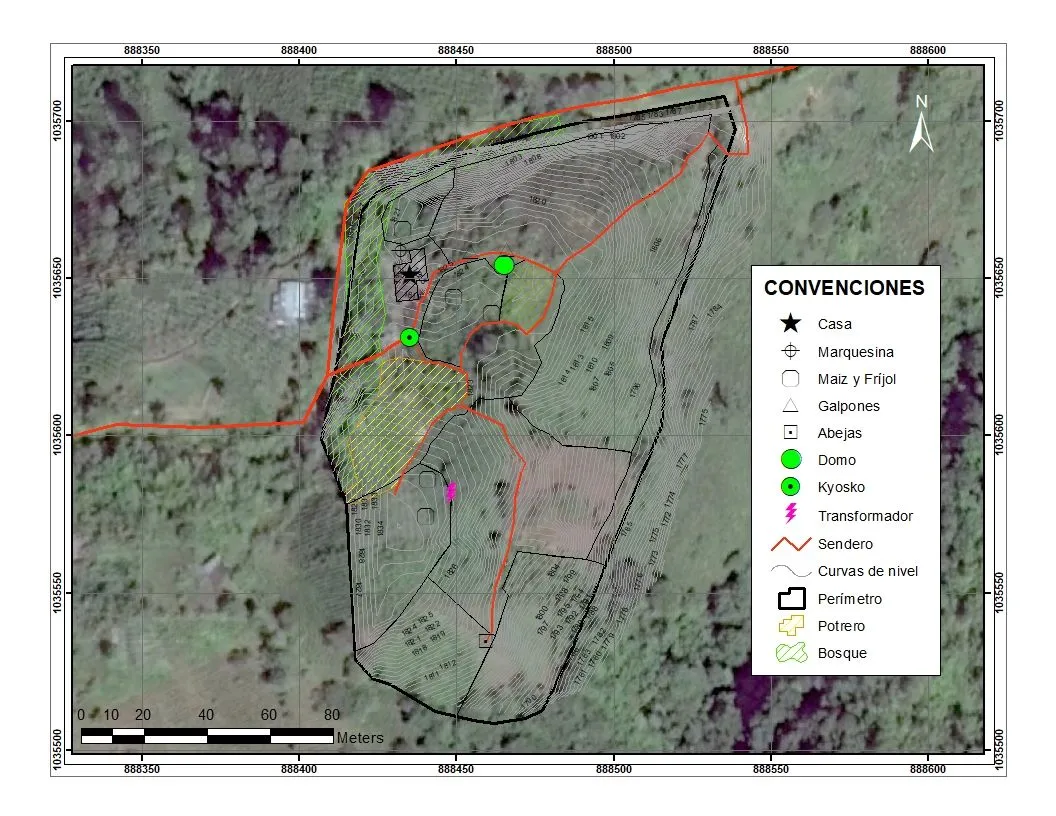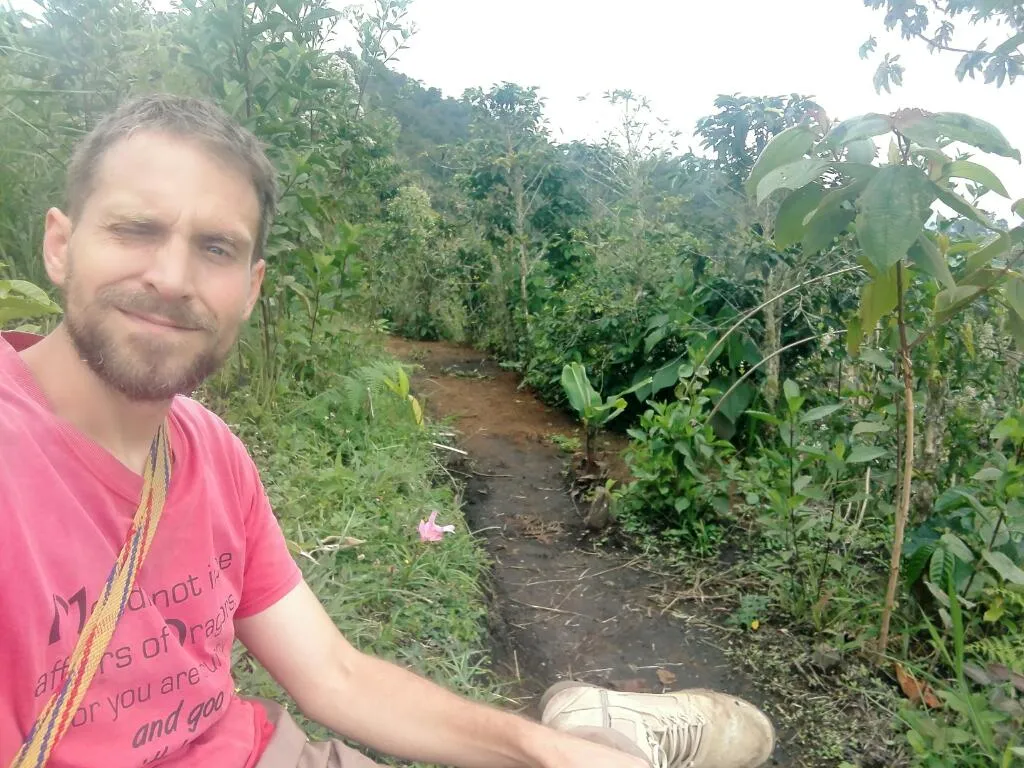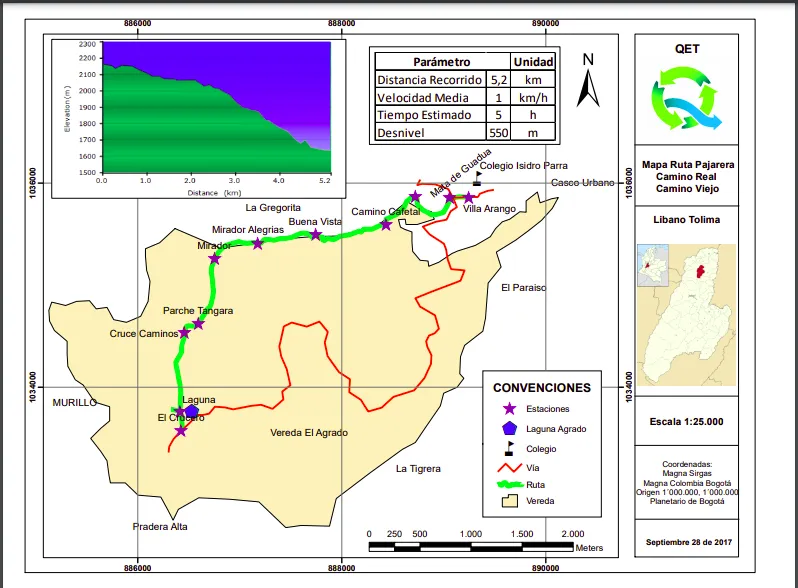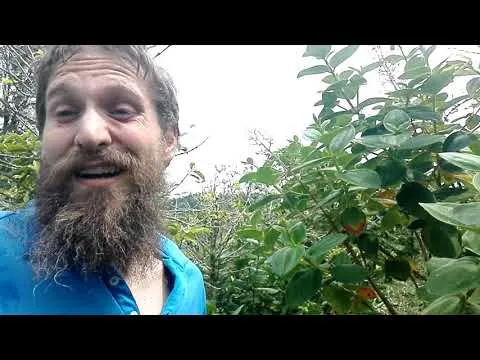This project is larger than myself. Its about local development, its about human development, its about cultural development, yes. Its also about agrarian reform. Its about the economics of individual liberties and their relations to societal frameworks. Above all its social.
Fix the brokenness in our systems.

A note on using HIVE
Applied appropriate technologies are a blessing. Technology is a tool - What tools can help us? Tools can have value structures too, and all the possible tools to help improve our human development are welcome to be tried and tested.
I have discovered the potential of HIVE and have been using it to my advantage. If you want to learn more about HIVE, I have written several guides. I try to serve as a gateway to HIVE for outsiders, with a smile on my face and an invitation to try out this new tool.
Install HIVE keychain
What are Resource Credits (RCs)?
How to change between HIVE and SWAP.HIVE
How to use Hive-Engine Diesel Pools
How to invest
I discovered the technology behind HIVE at a time in my life when I was already living on the margin looking for a solution to decentralized hosting and content ownership. (at that time it was called STEEM for reference). I had battled with server hosting and content management systems for a few years beforehand, and spent more time 'network administering' than making content.
But perhaps this struggle made me just tech-savvy enough to get onboard what would become a rising wave of 'distributed ledger technologies'.
@ecoinstant/why-i-am-using-steemit-what-is-it-good-for
When I began using what is now called HIVE, we were already living on the margin for a few years, we started posting some of our homesteading content and it went pretty well for us. For parts of our life it has even provided our subsistence. The post about the Sweet Guava Jelly was the first surprisingly big payout from a post, that my wife and I both started seriously considering how to best implement this technology into our lives.
Although it didn't always pay so generously, it was the start of a journey for us to building a presence on decentralized social media, bolted onto an economic banking system.
@ecoinstant/greetings-my-name-is-alex-sustainably-living-and-farming-in-the-colombian-andes
@ecoinstant/smooth-and-sweet-guava-jelly-spread-you-can-make-it-at-home
@ecoinstant/cleaning-the-giant-banana-plant-and-eating-the-ugly-frog-first
How I got started on the margin.
@ecoinstant/when-i-say-colombia-people-think-i-mean-cocaine
I moved to Colombia after completing 6 semesters in Economics at the University of Wisconsin Whitewater. I spent a few years working at an English Institute and bouncing back to the states to work other odd jobs. The second time I was in Colombia I let my visa lapse and became an illegal immigrant.
@ecoinstant/escaping-illegality-part-2
UNPUBLISHED: Escaping Illegality Part 3
Then after I went back to university and was able to count some of those job experiences as credits, and continue to deepen my immersion in Spanish language with university level classes, I finally moved to the campo with my girlfriend, to her home town.
At that time I was able to finish up a degree in Sociology at a distance, and she was studying a 2 year program to become certified as a Tour Guide on a national level.
Not everyone in my life prior was enchanted with the idea of me going to live in Colombia, but once I began to travel back and forth most of them seem to have come around to the idea. Colombia has a mala fama, a bad reputation. To this day there are red zone maps of areas it is not recommended to go.
@ecoinstant/how-to-travel-to-colombia-and-not-make-stupid-tourist-mistakes
I have some rural and agricultural roots, and I fell in love with el campo around my wife's hometown. I become obsessed with the idea of sustainable development, with marrying the three ideas of social, economic and environmental harmony. I was sure that by a paradigm shift all the worst problems in the world could be solved practically in one fell swoop
I started by asking myself a simple question - If rural people are so poor, why don't they do something different(ly)?@ecoinstant/if-rural-people-are-so-poor-why-dont-they-do-something-different
But to really answer this question, and not just theorize on paper, I had to learn about a new environment, and the challenges people face here.
Here's a brief look into this small town called Libano, Tolima.
@ecoinstant/walk-with-me-through-my-adoptive-small-town-of-libano-tolima
We lived in town for awhile, and began learning about and trying to implement 'permaculture'. Permaculture seemed like a natural tool, in fact 'a design system' that could help me pull together the different strands of sustainability.
Early in 2013 I attended an immersive Permaculture PDC with Scott Pittman in Costa Rica. Apart from learning lots and getting a ton of pertinent questions off my mind about the tropics (since most permaculture material I had read up to that point was about temperate North American and European Climates), I was also able to connect with great people from around the world, learn a ton about culture and see many great sites.
Upon return, we worked to implement small permaculture solutions even within our 'concrete jungle'.
@ecoinstant/growing-abundance-within-a-concrete-world
@ecoinstant/my-plant-diary-papayas-in-the-concrete-jungle
@ecoinstant/early-projects-urban-garden-planter-memories
Things got serious when we bought a small farm, called Buena Vista. Here we learned all about rural life, and some of it was indeed challenging.
@ecoinstant/the-price-of-water-a-true-story-of-andean-homesteading

Even learning how to conceptualize the property, with its extreme verticality, took us many years. Thankfully, @arangoaqet has helped us a lot in the last few years to make maps and visualize.
Initially when we began, we started by learning all about coffee, which is the traditional crop around these parts. The farm was full of coffee, and we did the work and lived the life - with some help! You can read my original posts about the topic:
@ecoinstant/the-truth-about-coffee-part-1
@ecoinstant/the-truth-about-coffee-part-2-traditional-colombian-process
This is replacing the metal shielding on the coffee sheller machine.
And we continued to published more evidence about what we were doing into the blockchain, such as our initial attempts to intercrop food with coffee. Coffee is a very interesting woody shrub and could happily have a place in any agroforestry system.
@ecoinstant/intercropping-agroforesty-food-forest-systems
Of course every homestead has to try to deal with chickens. In the end, at least when they annoy you, you can eat them.
@ecoinstant/chicken-life-homesteading-companions
We faced challenges of all sorts, such is the life of a homestead.
@ecoinstant/some-days-you-need-a-chainsaw-to-get-to-work
One of the serious challenges faced by rural people in these mountains is one of accessibility. There are two ways of dealing with the issue, either by harnessing beast power, or by using cars - and both need a road! On each of these subjects we have gained and continue to gain valuable experiences.
@ecoinstant/all-work-and-no-play
Horse
@ecoinstant/horsey-time-the-joys-of-horse-ownership
Some rural people are still incredibly skilled with the fascinating art of 'Arrieria', the art of making horses and mules carry stuff up and down and around the mountains. The people who do and did this are called 'Arrieros', and they were legendary in their day. Today few families maintain this practice.
UNPUBLISHED: Arrieros
We bought a horse and it birthed another horse. I never managed to become an arriero, and mostly found horse ownership to be incredibly burdensome, time consuming, and expensive. In the end we sold our horses, and happy to be rid of them, wonderful creatures though they were.
Car
Cars have their own challenges, one has to be vigilant with care and maintenance, so far I have been very happy with our 1979 Nissan Patrol, which we have had for officially one year and have now renewed the insurance and it passed all inspections.
@ecoinstant/car-ownership-learning-about-charmelas
Road
Road work is hard work, and it also requires civil engineering. We have gained some experience in these areas as well. Convincing people of good practices of civil engineering is another job as well, something like deciding what to do and then actually implementing a plan to do it are two different steps, which require different skill sets.
@ecoinstant/road-building-investing-in-real-infrastructure-improvements-on-the-ground
@ecoinstant/starting-road-work-day-1
@ecoinstant/work-update-three-days-later
@ecoinstant/road-building-days
Audio-Visual Projects ('Education')
One of the initial ways I had planned to work through a Permaculture Diploma, was with educational material. It seemed like a pressing need, to reveal to the world how I was now seeing natural systems - as interconnected ecosystems - a careful understanding of which would yield all of the solutions to all of the worlds problems.
Taking advantage of a great opportunity, I wrote and co-directed a short webseries about these concepts, with two great friends serving to record camera and sound on their own equipment!
Unfortunately, this webseries was caught up post-production hell for many years, as documented in this post:
But it was finally released, and you can see all 11 videos on youtube:
Ecological Instant Web Series Playlist
At some point in 2019 I made a few videos in an attempt to work up the courage to submit a diploma for our project, which has tenticles in so many directions it seemed almost unmanageable. All three episodes are on Youtube, and I add some written observations in the posts:
@ecoinstant/philosophy-of-a-agroforestry-planter-permaculture-diploma-documentation-episode-1
@ecoinstant/evolving-natural-systems-from-grass-to-forest-permaculture-diploma-documentary-episode-2
On-site System Design
Apart from accessibility and education, there are also the problems facing agriculture, mainly in two categories, soil fertility and plagues. Both come from poor system design and in the face of new information we have several solutions to offer.
Solutions of course must be fully fleshed out by robust testing, and species and strategies implemented where it makes sense to do so. Within the following sections I believe we have found the solution to unlock the next revolution in rural agriculture.
Contours

One of the big issues that affects slopes and steep slopes is acidification of the soil. This happens because as rain water runs downhill, it pulls H+ ions from the soil, itself acid at about 5.5 pH. This reduces the acidity of the rainfall but leaves the soils more acid. When soil is too acid, some plants cannot access nutrition in the soil.

By contouring slopes (and fish scaling steep and very steep slopes) we can reduce and heal acidification by creating areas where water can deposit and spread, giving it additional time to soak into the ground and also stopping its inertia down the slope.
@ecoinstant/cutting-contours-laying-the-slow-and-steady-groundwork-for-sustainable-slopes
POST PENDING - Contouring in Colombia Part 3 - Update
For very steep slopes, which we have, fish scales are a workable solution which are like dashed lines using the same techniques as our longer contours. Stagger plant the fish scales for maximum water retention and interruption of inertia.

Multiple Species
@ecoinstant/scrub-restoration-enriched-by-multi-species-timber-reforestation
We also use multi-species plantings to avoid plagues and pests. Creating production methods that work with nature is important to ensure that restoration is profitable. If its not profitable, no one will do it so we want to have economy and production systems in mind when we are analyzing the solutions.
@ecoinstant/maintenance-of-inga-edulis-reforestation-video-log-2
But aiming for profitable projects doesn't mean we have to accept the current poison paradigm. The application of poisons is to be avoided, especially systemically - but also treated with extreme care in the case of local and specific applications. This is interdependent with the process of inviting in natural biological controls like carnivorous wasps, bird and reptiles - many biological controls are themselves organisms which cannot survive in poisoned environments.
So this requires building a new mindset around mixing multiple species in production systems for habitat and for the benefit of cover and cross-cover. The work of Agroforestry Systems best describes scientifically what we are working to do.
As to propagation methods, I have found cuttings to be the most quick and effective for starting to increase biodiversity in different agricultural situations, and we use them to great effect establishing on contour and to build living contours into the earth.
@ecoinstant/cutting-cuttings-for-reforestation-and-future-growth
Nitrogen Fixing
Neither do we accept the fertilizer paradigm, with nitrogen fixing plants it is totally possible that our agricultural methods should allow soils to become richer over time. We have a long list of nitrogen fixing natives down here, including: Inga Edulis, Erythrina Edulis, Erythrina Poppageana, Senna viarum as trees and many additional 'weeds' and bushes that help to fix nitrogen in our soils.
The implementation of Nitrogen fixing plants, and the utilization of 'guaraña' chop and drop instead of poison application to control 'weeds' is an essential component to the overall solution.
Verticality in AgroForestry
The last important piece of the puzzle is vertical space. This is really the 4th dimension for agriculture, since its already about two dimensional space over time. But verticality opens up another whole dimension, and the taller we go with our systems the more can fit into the increased spaces. Also by utilizing trees in both the vertical and into the time dimension, we can increase exponential the overall amounts of energy trapped by the system.
More animal habitat as well, and more space for more organisms to participate, especially, but not only, birds. Birds and Birding are integrated into this project in many ways, and offer part of the solution. Birds come bearing gifts, and deposit their poop (fertilizer) below and beneath trees they perch in, and this also brings seeds from the inner forest into our outer zones.
Layered methodologies of cultivation have a lot of work to go, especially as the vertical dimension interacts with time. But one thing we know for sure, some trees want to be the tallest around, and they 'mark' the vertical limits. Here I have been using Cecropia Peltata with great effects. The trees sense each other and always want to be taller, and can be used to rapidly raise the vertical limits of all the species involved in the system.
SELVA 'Herramientas del Paisaje' Project to protect 2 species of endemic, endangered birds (Leptotila Connoveri and Atlapletes Flaviceps)
We got involved, through my wife and her interests, into a number of birding related groups and events. Colombia is supporting the growing culture of bird watching and observation, and the tourism surrounding that, as one of its development solutions.
It all started with a Summit Meeting, put on by SELVA, a Colombian not-for-profit ONG focused on birds. We were to save two species of bird that were endangered, they are also endemic to these mountains, meaning they are found no where else in the world.
And as it turns out, they already lived on our farm. After the summit, my wife published her observations of the two birds from 2015-2018, she was the first one with a good local photographs of these birds.
The town council of Libano declared the dove to be the 'Town Bird' or 'Ave Insignia' of el Libano.
@ecoinstante/la-caminera-tolimense-tolima-dove-leptotila-conoveri-es-orgullo-libanense
After the lead team members from SELVA came to visit us at our farm, they decided to hire my wife (@ecoinstante herself) as a local coordinator in the process of implementing the restoration plan designed to favor the recovery of these two bird species, but also to act as an umbrella project to facilitate increased recovery of habitat for all species, from other birds to reptiles to mammals.
She began that next year and I also helped out when I could!
@ecoinstant/native-species-enrichment-and-reforestation-in-the-colombian-andes
The project included 26 farms in Libano, including our very own Buena Vista, and managed to implement 15,000 trees of over 50 different native species, many of which were identified by observations made on our farm, and Buena Vista supplied lots of seeds and cuttings to the project in return, happy to help the effort. The implementation process culminated in an event about Ecological Restoration among the participant farmers and a professor of the matter from Javeriana University.
Our farm was able to receive many great trees during the final phases of implementation, clean out the greenhouse style.
@ecoinstant/continued-reforestation-in-the-middle-andes
After this phase continued one of constant monitoring, which is still going on to the present day, and a process which @ecoinstante is participating in both as a coordinator and as an academic, as she is now enrolled in the Ecological Restoration Master's Program at the Javeriana University.
@ecoinstant/planting-trees-around-town-revision
@ecoinstant/reforestation-monitoring-and-cart-advancements
What species to choose for a productive Project?
Productive projects then, must be a combination of 4-dimensional Agroforestry systems with multiple species involved. The combination and permutation of species is something that millions of farmers could do over decades, to find the absolute best combination on both form and function.
There are a number of promising local species, each with their own characteristics - and one must learn many of them to hope to piece together a complete system.
Bamboo
@ecoinstant/guadua-angustifolia-stronger-than-steel-but-chopped-with-a-hatchet
@ecoinstant/here-s-another-species-of-bamboo-that-i-use
By learning about and dealing with Bamboo, I came into an understanding of lunar cycles used for deciding when is the right time to cut bamboo, as well as other trees.
@ecoinstant/what-is-the-best-time-to-cut-timber-do-you-know-how-trees-work
A promising native tree that I am currently working with is called Cabo de Hacha locally. I am currently in the process of building up a 4 dimensional profitable project with this plant as one of the main commercial species.
Native Rescue: Viburnum Cornifolium
Infrastructure
Over the years, we have learned some things about internal infrastructure on the farm as well. Our first project has been a cause of some anxiety over the years for me, our ecodome project, which is currently unfinished (though closer than ever).
After an initial rush phase, the engineer in charge of the project left, we had spent all the budget and had barely reached the ground floor.

But he did leave us the plans, and a digital copy of 'the book', everything that I would need to study furiously over the next years in hope of one day finishing our dome.

@ecoinstant/check-in-let-s-take-stock-of-how-beautiful-life-is-while-we-can
Recently, we plan to advance building projects in 'the summer', or periods of good weather. If we can get a few days together we can make some projess on the ecodome, like we managed to do over the summer of 2020 and 2019.
@ecoinstant/earthbag-eco-dome-finally-some-summer-progress-days-1-and-2
@ecoinstant/earthbag-eco-dome-electrical-installation-and-the-bagging-begins-days-3-and-4
@ecoinstant/ecodome-progress-days-5-through-7-run-roof-rain
We have also built an outdoor picnic table - "El Comedor", designed and constructed in 2020 with an eye to minimize material cost but increase the space available for sitting and eating and the number of people able to do so at the same time.
@ecoinstant/building-eden-s-infrastructure
@ecoinstant/building-eden-s-infrastructure-part-2
In late 2020 and 2021 we turned our attention to making a new house, as our house was falling apart while waiting for the ecodome to be done.
@ecoinstant/pictures-from-new-metal-structure
@ecoinstant/finally-back-home-on-the-farm
I am now opening up some space to make a kitchen and the bathroom.
@ecoinstant/life-update-i-am-alive-and-shoveling
Infrastructure is important for tourism, and we are also working towards having inexpensive structures that serve the needs of the farms as hospitality providers, whether it is to stay over night or eat lunch - or even just un tinto.
Tourism - Community Green Plan
As part of the Permaculture Diploma project, we worked on the long term plan for our rural road, our Community Green Plan. Together with my wife we walked the length of the trail and talked to all the neighbors involved. We made the hike into a 'package', something that a group of people could sign up to experience.

This process continues today with the development of the road and our continued participation in local governance. Collectively, it became known as 'Ruta Pajarera'.
@ecoinstant/socialization-of-the-ruta-pajarera-del-camino-real
In 2017 we got a ~300 dollar local government contract to build a sign in the main park in town. Signs and image based communication is part of the tourism infrastructure that is lacking, but slowly being built up, down here in this part of the world.
@ecoinstant/sustainably-developing-communication
Since building the sign, we have taken many pictures of our tourists there, including this 2018 visit by my dad and grandfather. Tourism is something that we are still practising at, and getting better. The whole town is working at it as well.
@ecoinstant/sustainable-tourism-is-it-an-oxymoron-or-a-new-opportunity
There hasn't been much international tourism since March of 2020, but internal 'tourism' has increased, Colombians from the cities are coming to town and many are staying, surely sick of urban life under pandemic restrictions and seeking the open air ventilation that only a healthy campo can provide.
ECOBANK
As a conclusion, our current ECOBANK project is being worked on as a way to further connection between the technology and the sustainable development solutions. The up to date information feed is at @ecobanker.
Based on building a reputation on this technological platform for the past 4 years, I feel comfortable launching a profitable project designed with permaculture in mind, to serve many functions and be beneficial to everyone involved.
@ecoinstant/buying-land-with-crypto-gains
@ecoinstant/on-the-ground-lets-look-at-this-land
@ecoinstant/a-possible-ecobank-model-for-revision-and-feedback
@ecoinstant/ecobanker-project-additional-benefits-information
From here, all that can be said is there is a long way to go in many directions. There is no conclusion to any one project, its more like a kaleidoscope of different projects opening and closing, spiraling outward into the the land of the real, where the trees get bigger every year and every year we feel happier than the last that we started, that we planted that seed.




